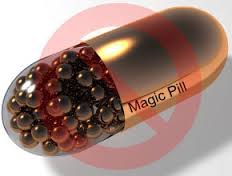In a paper published in the peer review journal Ageing Research Reviews this month, authors Ingram and Roth summarise their long research into calorie restriction mimetics. Calorie restriction (CR), i.e. the reduction of the amount of calories an animal consumes, without compromising on the quality of the diet, is a well-known method of extending healthy lifespan. But, as most people find it very challenging to spend many years on a strict diet, there has been a tendency to research drugs or compounds which mimic the biological and physiological benefits of calorie restriction, without the need to go on a diet. These compounds are called calorie restriction mimetics (CRM). Many agents have been described in this respect, which cause phenotypic changes and eventual health improvements.
 Ingram and Roth said: “we have proposed that a CRM is a compound that mimics metabolic, hormonal, and physiological effects of CR, activates stress response pathways observed in CR and enhances stress protection, produces CR-like effects on longevity, reduces age-related disease, and maintains more youthful function, all without significantly reducing food intake, at least initially….The field has grown steadily with many investigators proposing other strategies, including novel anti-glycolytics. Research focused on downstream sites has included insulin receptors, IGF-1 receptors, sirtuin activators, inhibitors of mTOR, and polyamines”.
Ingram and Roth said: “we have proposed that a CRM is a compound that mimics metabolic, hormonal, and physiological effects of CR, activates stress response pathways observed in CR and enhances stress protection, produces CR-like effects on longevity, reduces age-related disease, and maintains more youthful function, all without significantly reducing food intake, at least initially….The field has grown steadily with many investigators proposing other strategies, including novel anti-glycolytics. Research focused on downstream sites has included insulin receptors, IGF-1 receptors, sirtuin activators, inhibitors of mTOR, and polyamines”.
Only this month, Chinese scientists reported that a derivative of the antimalarial artemisinin has definite effects on the mitochondria which mirror those of calorie restriction itself, confirming that the deeper one looks, the more likely it is that more such compounds can be discovered. Examples of CRM include oxaloacetate, metformin, deoxuglucose, leptin, iodoacetate, DPP-4 inhibitors adiponectin, gymnemoside, Rapamycin (and related agents), and many others.
Research into this field has been going on for at least two decades. But quite recently, the penny dropped: if there are artificial or natural agents, which replicate the benefits of calorie restriction, why not look at other areas where the benefit is desirable but the action itself is less so? A logical consequence of this line of thought was to find mimetics of exercise, whereby one may experience the same physiological effects of exercise without actually having to physically do it.
The act of physical exercise activates molecules and genes such AMPK (adenosine monophosphate-activated protein kinase), SIRT1 protein, peroxisome proliferator-activated receptor gamma coactivator-1alpha (PGC-1α) and peroxisome proliferator activator receptor delta (PPARδ). There is a complex relationship between these and other molecules with significant crosstalk between the different elements. But, the thinking goes, if there are physical compounds which can replicate some of these effects, then one may experience an overall health improvement without the need to exercise.
Some important exercise mimetics are:
* AICAR (5-amino-1-β-D-ribofuranosyl-imidazole-4-carboxamide) or Amino-Imidazole Carbox-Amide Ribonucleotide. This is an agonist, i.e. a stimulant, of AMPK and it interferes with the PPARbeta/delta gene which is normally activated during physical exercise, as mentioned above
* Free Fatty Acids (FFA). These can enhance other exercise mimetics such as AICAR, and regulate interleukin factors and muscle-adipose tissue crosstalk, both of which are consequences of physical exercise.
* Sestrins. These have several effects on metabolism including inhibition of mTOR, antioxidant activity and effects on AMPK up-regulation.
* Resveratrol, has an effect on the AMPK-SIRT1-PGC-1α pathway and may enhance endurance.
* Myostatin inhibitors. Still not available for human use, these inhibitors down-regulate myostatin and have a positive effect on muscle growth and function.
Another controversial area where mimetics can be applied is sex. This conjures visions of people either having virtually unlimited sexual prowess, or just sitting at home popping pills and feeling sexually gratified. However, the research is much more legitimate. One sex mimetic is, of course, the group of oestrogen analogues, found in hormone replacement therapy. By extension, other sexual hormones such as testosterone enhancers or peptide-based hormonal releasers can be considered sex mimetics. But there is also active research into identifying receptor modulators which may up-regulate hormones and other physiological benefits of sexual activity.
Mimetics of other activities include sleep mimetics (incretin), heat or cold mimetics (e.g. Peptidergic CGRPα), immune mimetics (such as the Smac mimetic TL32711) and many others. It seems that any physiological aspect of our biology has the potential of being mimicked by extraneous agents.
It sounds too good to be true. So here is the catch. With respect to exercise, the mimetics are aimed primarily at people who are unable to exercise perhaps due to surgery, muscular disease or just frailty. They are not for use by healthy people who are just too lazy to exercise. The same is true for other mimetics, which are aimed at people who are ill, or are used within a research context to help us better understand the physiological action in question. The physical action itself stimulates a vast number of parameters which act in an integrated manner in order to produce the benefit. Externally administered agents may mimic some of the benefits but not all, so one has to consider a combination of carefully selected compounds in order to cover as many potential benefit areas as possible.
The most adventurous have already started using CRM on themselves, and the clinical use of other mimetics is set to follow and become more widespread. But in my view, it is too early to blindly follow this path without any expert supervision, not just because of unknown side effects and interactions, but also because the human body responds better to a complex, not a reductionist approach.

